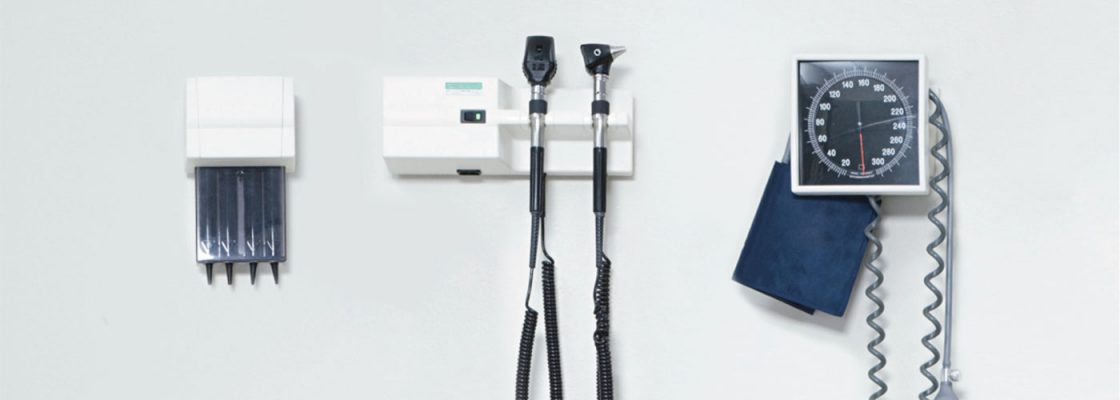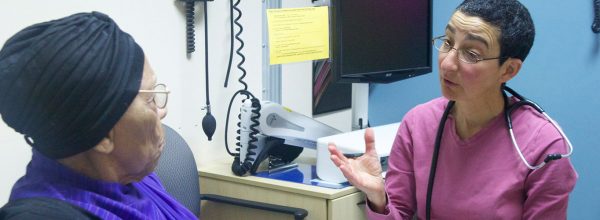We don’t always need the doctor to have all the answers. As someone who has multiple chronic conditions, I want a partner in my care, I want a collaborator, and I want empathy from my doctor. When I think about all the times I’ve interacted with doctors over the course of my life as a patient, the difference between the good and the bad interactions lies in how they communicated with me.
I’ve had many visits to address my symptoms, try new medications when one is ineffective, and deal with side effects. It’s not just my health that’s impacted by these conditions, though, but my quality of life, my work, my personal relationships and many other things in between. While I believe I’ve gotten good medical care, it’s common to feel rushed through a visit, which is understandable when there are time constraints. But I’m usually left feeling unheard and frustrated at not having the chance to focus on the topics that were really important to me.
I recently saw a new doctor, and when I was describing some of my medical history, she commented that it must be really hard, that I was dealing with a lot and that I was doing a really great job handling everything. Then she said, let’s talk about how I can help you, and proceeded with the visit, talking about new medications and strategies. Her saying that simple phrase—“that must be really hard”—made me feel that she heard me, understood what I was going through, and wanted to be my partner in addressing it. It had been a long time since I felt that a doctor truly saw me and would advocate for me.
Because of these experiences, I’ve been excited to work on a program The New Agenda: Patient-Centered Strategies for the Exam Room. At the beginning of 2016, CCI set out to train clinicians to be better communicators and to go deeper into the relationships they have with their patients, using the Four Habits model, co-developed by Dr. Richard M. Frankel. The Model is composed of 23 skills that make up four sequential habits:
- Investing in the Beginning
- Eliciting the Patient’s Perspective
- Demonstrating Empathy
- Investing in the End
Some of the key skills include generating an agenda early in the visit to elicit the full range of the patient’s concerns (Habit 1), asking about what the patient hopes to get out of the visit (Habit 2), exploring the patient’s feelings by identifying or labeling them (Habit 3), and testing for patient comprehension (Habit 4). To learn more about these Habits, download the monograph and list of skills.
One of the main goals of this program was to improve patient experience. To evaluate the effectiveness of the Four Habits model in practice, CCI engaged Management and Technology Consultants, an NCQA certified vendor, to field a validated survey asking patients to report their experience with the care provided by their doctor. More than 600 surveys representing responses from the patients of 14 primary clinicians, were collected at both baseline and the post measurement. All 12 questions improved from baseline, ranging from 5%-10% improvement, and all results were statistically significant.
In addition to improved patient experience, what really stuck out to me was this program’s impact on provider satisfaction. In monthly reports and share-and-tell webinars, I heard from clinicians how practicing these skills helped them find more joy in their practice. To me, these stories are powerful examples that back up statistical evidence. Here are some examples:
- “I am enjoying my job more. Keeping a positive attitude is very important in this work.”
- “I found that asking open-ended questions was very useful in eliciting the patient’s story and provided me with relevant history and associated symptoms without directly asking for them.”
- “In no matter what setting, it was always easy to get the patients to feel comfortable with me when I showed interest in something other than their illness.”
- “Generally, this is a more satisfying experience from my perspective. When I don’t utilize these habits I seem to notice it and don’t feel as satisfied after the encounters.”
- “I saw that patients felt more comfortable being in charge of the visit goals.”
- “I love to explore barriers to implementation [Skill 21, Habit 4]. It works well with patients in helping them identify barriers they were unaware of.”
- “I love being a clinician, and the Four Habits has made the experience even more rewarding.”
You don’t have to have formal training to conduct your own tests to see if aspects of this Model will help you and your patients. So I encourage you at your next patient visit, try starting your visit with an open-ended question like “I understand you’re here for…could you tell me more about that?”, set the agenda with your patient’s input, explore the impact of the patient’s chronic disease on their life, use brief empathetic comments like “you seem really worried,” or ask the patient to repeat your instructions and next steps at the end of the visit. I hope you’ll be pleasantly surprised at how you feel afterward and the difference a small change in your communication will have on both you and your patient.
As we head into 2017, building strong relationships and communicating in an inclusive, empathetic and empowering way will be even more crucial. In a time of political and policy uncertainty, making personal connections with patients allows us to center the work that really matters—the lives and feelings of people.
Find this useful or interesting? We’re constantly sharing stuff like this. Sign up to receive our newsletter to stay in the loop.






